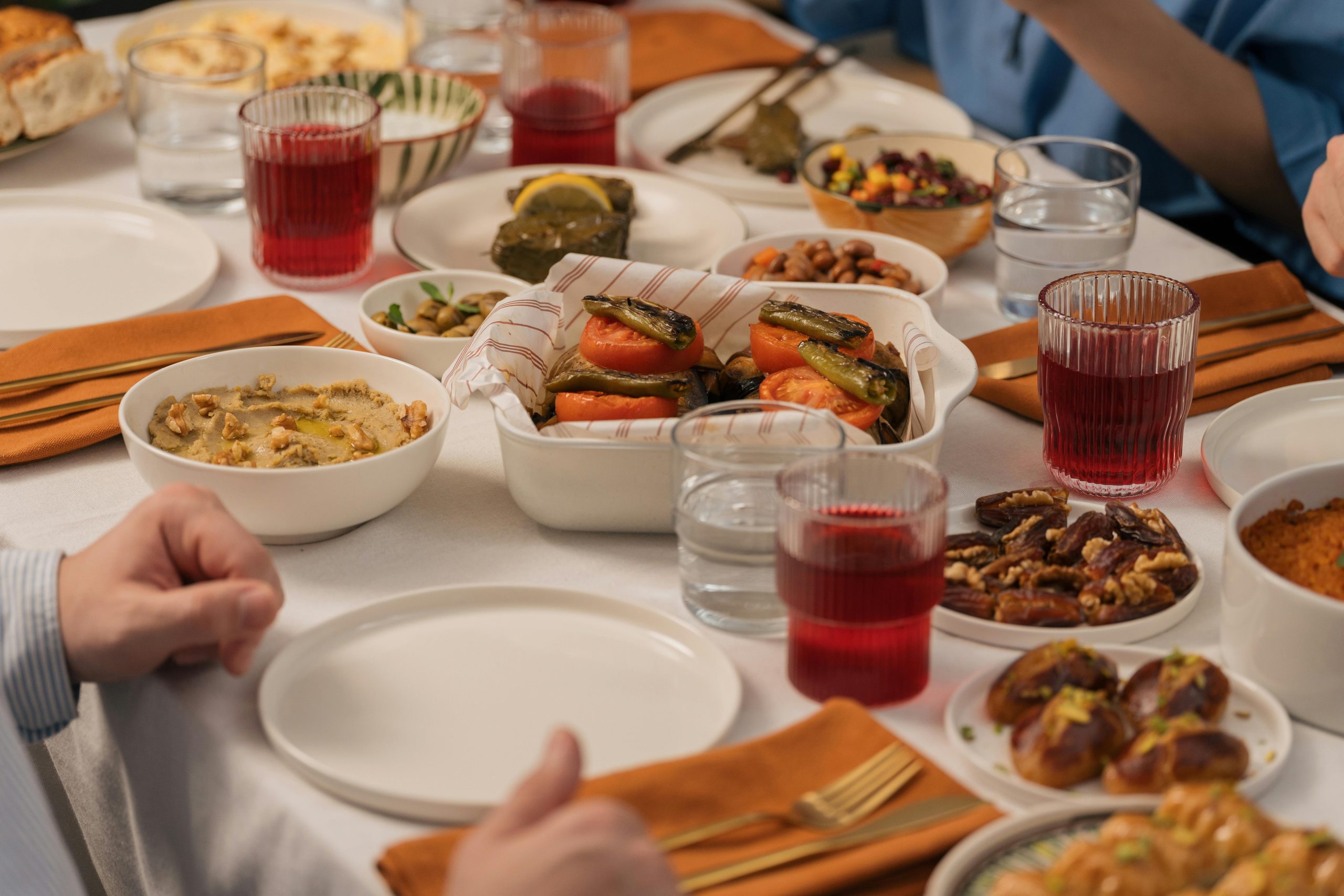Food is not just about sustenance; it is a powerful expression of identity. From the spice that enters into a family dish to the traditions that surround a community celebration, food tells us about who we are, where we come from, and what place we hold within the world. This relationship between food and identity transcends personal histories, cultural heritage, and social life. To see this relationship is to have deepened understanding of how food creates and expresses individual and collective identity.
1. Cultural Identity: Food as Symbol of Heritage
Food is most obviously associated with identity through culture. Every culture has a singular repertoire of dishes, methods of cooking, and ways of eating that tell its tale.
- Classic Recipes: Regardless of the dish jollof rice in Nigeria, kimchi in Korea, or tacos in Mexico traditional food is handed down from generation to generation. Recipes serve as edible archives, preserving ancestors’ knowledge, taste, and techniques.
- Cultural Expression: Food is symbolic during festivities and celebrations. For example, during Eid, Muslims worldwide prepare special cuisine like biryani or suya to celebrate the occasion. Chinese New Year also involves dumplings and fish to represent prosperity and wealth.
- Language of Food: Food names, the ingredients used, and even the salutations during meals all contribute to cultural identity. Eating meals together helps to reinforce communal belonging and shared heritage.
2. Personal Identity: Food as Memory and Emotion
At the personal level, food is inextricably linked to memory, emotion, and personal experience.
- Nostalgia and Childhood: Food is likely associated with individuals’ childhood. A specific dish may remind one of their grandmother’s kitchen or a special occasion. These memories can be powerful reminders of comfort, belonging, or even loss.
- Self-Expression: Vegetarianism or religious dietary prohibitions, for instance, may be at times an expression of one’s own values, morals, and belief system. Such a manner, therefore, is the way through which what we consume is likewise a statement expressing who we are or who we aspire to become.
- Healing and Identity Formation: For immigrant or diaspora communities, food often acts as a bridge between the homeland and the host country. Cooking traditional foods helps one remain connected to his or her heritage in the midst of new cultural circumstances.
3. National and Ethnic Identity: Food as a Political and Social Marker
Food can also be a national and ethnic source of pride or a political hot potato.
- Food Nationalism: Countries promote specific dishes as part of national heritage. Italy and pasta, Japan and sushi, Ethiopia and injera are all popular combinations globally and domestically. They are the center of tourism, diplomacy, and cultural branding.
- Contested Foods: Sometimes, one nation or ethnic group lays claim to one dish. The dispute over the origins of hummus between Israel and Lebanon, or jollof rice between Ghana and Nigeria, shows how food is also a stage for competition, pride, and defiance.
- Diaspora and Hybridity: Immigrant communities are likely to transform their customary foods with ingredients available, yielding hybrid cuisine. Chinese-American food or Nigerian-British fusion foods are illustrations. These changes reflect the evolving character of identity in globalized countries.
4. Religion and Spiritual Identity: Sacredness of Food
Religious belief strongly shapes food identities, which stipulate what can be eaten, how, and when.
- Food Laws: Halal (Islam), kosher (Judaism), and vegetarianism (Hinduism, Buddhism) are more than dietary practices; they are expressions of religious devotion and identification.
- Fasting and Feasting: Ritual fasting and feasting such as Ramadan, Lent, or Ekadashi emphasize the role of food in celebration and religious self-control.
- Food Offerings: Food is employed as an offering to gods or ancestors in most religions, highlighting its holy nature. Prasad in Hinduism or communion in Christianity are among the ways in which food acts as a vehicle of communication with deities.
5. Globalization, Migration, and the Evolving Food Identity
Food identities never stop evolving in today’s globalized world.
- Fusion and Innovation: Globalization is responsible for fusion foods where ingredients from foreign cultures are mixed together, like Korean tacos or sushi burritos. These foods reflect multicultural identities and cosmopolitanism in cities.
- Loss and Revival: As people come into contact with new foods due to globalization, people are also at risk of losing their traditional food traditions. There is also currently a movement to revive indigenous foodways, preserve culinary heritage, and support food sovereignty.
- Food and Identity Politics: Issues of food deserts, cultural appropriation of food, and the ethics of food production are becoming part of identity discussions. Who produces what food, who profits from it, and how it is constructed in the media are all inherently political questions.
You Are What You Eat
Food is an identity mirror. It is a reflection of migration and memory, culture and colonization, religion and family. To eat is to not just feed the body, but to participate in the complex web of meaning that makes us who we are. In the midst of global flux, food is one of the most intimate and enduring expressions of identity. As we sit to eat alone, with family and friends, or overseas we are not merely consuming calories. We are tasting history, tradition, and belonging. And in doing so, we are continually crafting the identity that we have and share with others.





Leave a Comment